Resistance classes
Of course, when labeling models, manufacturers indicate the resistance class and depreciation period. It is believed that the first number in the marking indicates this. However, everyone understands that this method of determining the service life of a car is questionable. Ideally, you need to look at the real experience of other drivers using the car, read reviews and get other practical data. It is generally accepted that new cars with the first, second or third class last from 3 to 5 years, cars of the fourth class will last 5-7 years, cars of the fifth are designed for 7-10 years of service.
Is it necessary to establish SPI to calculate vehicle depreciation?
If a car is registered as a fixed asset, then the organization is obliged to establish a depreciation group for it in tax accounting, in accordance with which the useful life for tax purposes will be determined.
Also, SPI must be established to include the cost of a car as an expense in accounting.
The organization accrues depreciation on the vehicle throughout its entire service life until complete physical wear and tear is reached or until the object is disposed of or written off.
How to determine it in accounting?
Accounting legislation does not contain clear restrictions on the duration of the useful life.
Clause 20 of PBU 6/01 explains what factors should be paid attention to when determining the service period.
At the same time, there is no prohibition to be guided in this matter by the Classifier established for tax purposes.
That is, if it wishes, the company has the right to establish the same SPI in accounting for a car as for tax purposes under the Classification of fixed assets.
At the same time, you can set another period that is appropriate for a particular vehicle, and you should take into account:
- scope of application of the vehicle;
- planned operating time;
- influencing factors - climatic conditions where the car will be used, territorial features, characteristics of the place of operation - urban or rural, frequency of use, procedure for maintenance and repair, as well as a number of other influencing circumstances;
- existing restrictions - for example, the lease or rental period.
How to find out in tax accounting using the Classifier?
The useful life for tax purposes is determined according to the Classification approved by Decree of the Government of the Russian Federation No. 1 dated January 1, 2002, as amended. dated 07/07/2016.
This Classification provides for 10 depreciation groups with different service lives.
Depending on its type, area of application, size, and power, a vehicle can be classified into groups from the second to the fifth.
In this case, the service life, depending on the depreciation group, can vary from 2 to 9 years.
Data on useful lives for various types of movable property are presented in the table.
Table:
| Depreciation group according to the Classifier | Useful life, l. | Type of vehicle |
| 2 | 2-3 |
|
| 3 | 3-5 |
|
| 4 | 5-7 |
|
| 5 | 7-9 |
|
Passenger car
For passenger cars, the useful life differs depending on the size of the car:
- from 7 to 9 years (85 - 108 months inclusive) - large and upper class with an engine capacity of 3.5 liters;
- from 5 to 7 years (61 – 86) – small class cars intended for disabled people;
- from 3 to 5 years (37 – 62) – other passenger cars.
To determine the correct useful life, you need to find out the engine size of the passenger car, then find out the depreciation group (3 or 5, for disabled people - 4), then select the appropriate SPI from the proposed range.
Example
Mercedes Benz 350 R350 CDI 4Matic with an engine power of 224 hp. can be classified as depreciation group 3 as a middle-class passenger car with an engine capacity of up to 3.5 liters (OKOF 310.29.10.2).
For it, you can select any number of months from the range from 85 to 108 as the service life.
Bus
For buses, the service life differs depending on the length, area of application (city, intercity):
- from 7 to 9 years (85 - 108 months inclusive) - other bus trains with a length of 16.5 to 24 m;
- from 5 to 7 years (61 – 86) – city bus trains from 16.5 to 24 m, other medium and large buses (up to 12 m), as well as long-distance buses;
- from 3 to 5 years (37 – 62) – city and other small buses up to 7.5 m.
That is, in order to correctly determine the SPI, you need to know the dimensions of the bus (its length), as well as its scope.
Example
PAZ 32053 with a gasoline engine is used for passenger transportation within the city, has a length of 6.925 m.
Such a bus can be classified as depreciation group 3 as an urban small type with a length of up to 7.5 m (OKOF 310.29.10.30.111).
The useful life can be selected from the range from 37 to 62 months inclusive.
Truck
To correctly determine the service life of trucks, you need to look at the maximum permissible weight according to the technical passport, the area of operation:
- from 7 to 9 years (85 - 108 months inclusive) - trucks with diesel and gasoline engines weighing from 3.5 to 12 tons and over 12 tons;
- from 5 to 7 years (61 – 86) – general purpose trucks (this includes flatbed trucks, tractors, dump trucks, vans);
- from 3 to 5 years (37 – 62) – small trucks with a maximum possible weight of up to 3.5 tons.
Examples
- KamAZ 6520 is a heavy-duty dump truck that can be classified as depreciation group 4 (OKOF 310.29.10.4). SPI can be from 61 to 86 months inclusive.
- The cargo gazelle GAZ-33023, running on gasoline, intended for the transportation of goods, with a carrying capacity of 1 ton - is included in group 3 depreciation as a truck with a gasoline engine up to 3.5 tons (OKOF 310.29.10.42.111), SPI from 37 to 62 months inclusive.
- Trailer - both cargo and passenger cars can be included in group 5 (OKOF 310.29.20.23).
Special equipment
Depending on their purpose, special machines can be assigned to depreciation groups 3, 4 or 5.
Accordingly, a period of use can be set for them:
- from 7 to 9 years (85 - 108 months inclusive) – truck tractors; auto hydraulic lifts, garbage trucks;
- from 5 to 7 years (61 – 86) – hearses, fuel trucks, timber trucks, vehicles for municipal and road services, emergency service and police vehicles, vehicles for transporting gas up to 1.8 MPa, petroleum products;
- from 3 to 5 years (37 – 62) – other special vehicles.
Useful service life - individual parameter
The concept of a vehicle's useful life does not depend on the vehicle itself. To a greater extent, it is determined by operating conditions. If you fill the engine with cheap oil and do not change it every 10 thousand kilometers, then any car will not drive for a long time, and durability classes do not play any role here. However, cars with timely maintenance and low annual mileage can last much longer without causing any problems to the owner.
Many car owners know from personal experience that a second-class car in terms of useful life can last more than 20 years. And then you can even sell it quite expensively. The new owner will also drive for 5-10 years, but only subject to timely maintenance.
Buses
The SPI of buses depends on its dimensions and area of use (city or intercity):
- from seven to nine years – other types of buses, the length of which is from 16.5 to 24 meters;
- from five to seven years - large buses up to 24 meters long, which travel within the city and between cities;
- from three to five years – small buses up to 7.5 meters long.
For example, let's take a bus 18 meters long that transports passengers between cities.
Based on the length and place of operation, it can be determined that its depreciation group is 4, that is, its service life is from five to seven years .
Read in this article how long honey is valid. certificate for obtaining a driver's license.
What determines the actual service life of a car?
Standard service life calculations for a private owner are irrelevant. They are taken into account only for the financial statements of companies that have cars on their balance sheets. A private owner only needs to know that the car will behave normally in different situations on the roads and will be able to deliver it from one point to another.
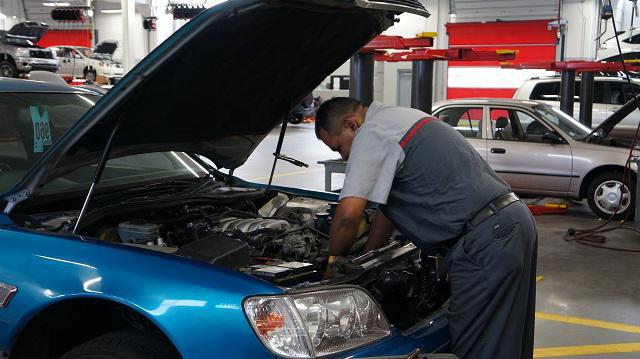
It is possible to derive many criteria that affect the actual service life of a car, regardless of which class it is assigned to.
- Mileage per year. Of course, one of the most important factors is the one that determines how long the machine will last. If a car sits in a garage for ten years, it will only lose its appearance, but the condition of the internal parts and friction pairs will be ideal. Some drivers' cars cover 30-40 thousand kilometers per year. Naturally, the service life of such vehicles will be shorter in years.
- Transport storage. This is another important factor that plays a role and determines the condition of the car. If the car is always on the street, then corrosion will occur on the body. When stored in a garage, corrosion can be avoided for many years.
- Timely maintenance of the machine and replacement of all prescribed “consumables” on time. The manufacturer indicates in the instructions at what mileage or time it is necessary to change the oil, air, gasoline, oil filters, etc.
- Use of original consumables and spare parts during maintenance. Often there are analogues on the market that are cheaper than original spare parts. It is not recommended to use them.
- Quickly eliminate problems that arise during the operation of transport.
- Driving style, attitude towards the car.
- Condition of the roads. Cars in Europe last much longer than the same brands in Russia. One of the reasons is the quality of the road surface. If the vehicle drives on a perfectly smooth road with no potholes most of the time, it will last longer. In Russia and the CIS countries, the condition of roads is noticeably worse, which explains the frequent repairs of vehicle chassis.
Accessories
Any car needs consumables that require periodic replacement. Not only the comfort, but also the safety of the owner depends on their condition.
Tires (winter, summer)
The wear and tear on this car part is affected by your driving habits. If you more or less adhere to the operating rules , then your tires may well last more than 150,000 km .
whether to buy a winter set of tires or not. Some manufacturers recommend using new sets every year. The condition of the tires is easily determined by the naked eye, and the responsibility for timely replacement lies with the owner.
It should be noted that having a winter pair of “shoes” for your car extends the life of the summer ones . And the quality depends on the manufacturer and price.
You can learn more about the expiration date of car tires in this article.
Antifreeze
Thanks to antifreeze, the car maintains an acceptable temperature . The cooling system is very sensitive and low-quality coolant can ruin it. Different manufacturers provide a guarantee for antifreeze from 1 to 5 years .
But practice shows that more frequent replacement ( every 1-2 years ) of this fluid prolongs the life of the car. An indicator of the quality of antifreeze is its color . It should be blue .
Shock absorbers
What is the service life of car shock absorbers?
Bad roads and aggressive driving primarily have a destructive effect on shock absorbers.
Russian manufacturers promise serviceability of these parts for 30 thousand kilometers , foreign ones extend the service life to 70 thousand .
Brake fluid
High-quality braking can sometimes save a driver’s life. a very important role in the process of slowing down a car . Despite the fact that good manufacturers guarantee the preservation of all qualities for 3 years , this substance must be changed every one and a half to two years .
Moreover, the number of kilometers does not affect the frequency. A car is a system, and damage to any one element quickly disables it. Do not neglect timely maintenance and change fluids and consumables on time.
Even the best quality products cannot serve us forever. Read about what shelf life you can expect when purchasing a battery, fire extinguisher, first aid kit, pipes, cigarettes, cartridges, fluorescent lamps, gel polishes, cosmetics and perfumes in our other articles.
Area of transport use
The scope of transport can also be added to these criteria. For example, if a car carries heavy loads, its suspension will fail faster than the suspension of a passenger car driven by only one person. And although in large trucks and trucks the engines and suspensions are designed for increased loads, statistics show that such vehicles have a shorter actual service life compared to passenger cars.
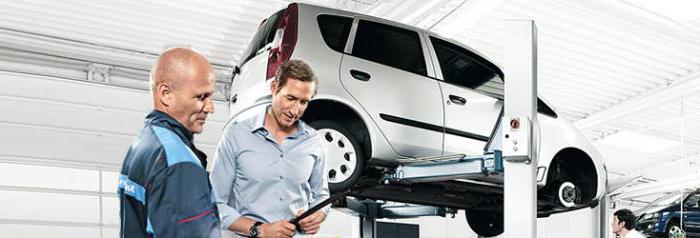
Also, frequent washing and maintenance of the car body will extend its service life. In general, the car body is the only thing that cannot be replaced. All other parts, including the engine, can be replaced with new ones. However, if the metal of the body is damaged, repairs will be expensive.
Determination of the depreciation group of passenger cars
According to the generally accepted classification in force in the Russian Federation, passenger cars are divided into 5 classes. The key criterion for such a division is engine size. It looks like this:
- class 1 - includes cars with engine volume less than 1.2 liters;
- class 2 - volume varies between 1.2-1.8 liters;
- class 3 - cars with an engine capacity of 1.8-3.5 liters;
- class 4 - vehicles with an engine capacity exceeding 3.5 liters;
- class 5 - executive cars, the engine size of which does not play a decisive role.
Important! Executive class cars of domestic production have a numerical classifier “5”, which is placed first in the model number. For foreign-made vehicles, such a classification is not provided: whether a car belongs to the highest class is determined by the manufacturer.
Average vehicle lifespan
In Russia, the average service life of cars, established by most manufacturers, is 5 years or one hundred thousand kilometers. This means that if a car has traveled 100 thousand kilometers or has stood in a garage for 5 years without moving, then the owner of such a car no longer has the right to demand repairs from the manufacturer in the event of a breakdown. Even in the case of a manufacturing defect, the manufacturer will not eliminate the defect or repair the car. 5 years or 100 thousand kilometers - this is the warranty period for a car that manufacturers most often set.
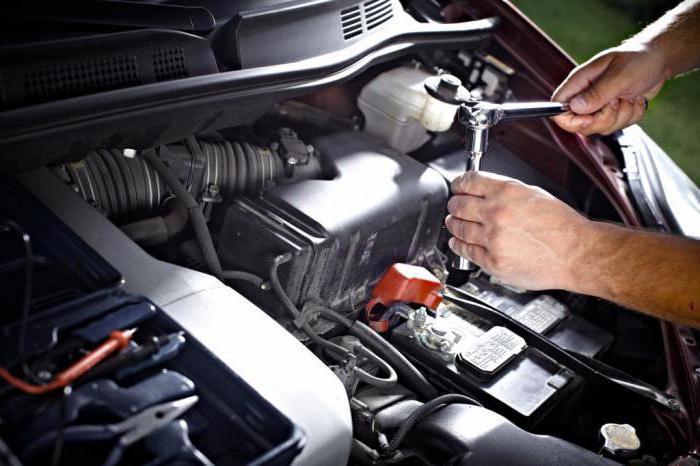
It is worth noting that this deadline was set for a reason. After 100 thousand kilometers, problems begin with many cars, so most car owners try to sell them as quickly as possible by this time. Often on advertising platforms you can see advertisements for the sale of cars that are only 4-5 years old or have a mileage of 100-120 thousand kilometers.
You managed to prove that the deficiency is significant. What's next?
If you can prove that a significant defect was caused by a manufacturing defect, then the dealer is obliged to repair your car within 20 calendar days. If this does not happen, you have the right to demand full compensation for the cost of the car! Yes, that's right, full cost excluding depreciation.
In theory, everything is easy and simple. But, as our long-term practice shows, it is almost impossible to prove in court that the defect is a manufacturing defect after 5 years of using the machine without the help of an experienced lawyer. Do not delay the deadlines, if you have complaints about the quality of your car, it is better to immediately consult with a car lawyer, find out your rights and start acting!
The most reliable cars with long service lives
The American company JD Power and Associates, based on a survey of 80,000 new car owners, compiled a car reliability rating. The company's analysts for each manufacturer determined the number of problems that 100 car owners had during the first 90 days of operation. The first places went to the concerns whose cars had the fewest problems.
For the second year in a row, the Korean concern Kia takes first place. There are an average of 72 faults per 100 new cars sold.
Second place goes to the Korean company Genesis (a subsidiary of Hyundai) with a result of 77 faults per 100 cars.
Third place – Porsche. For every 100 Porsche cars sold, there are 78 breakdowns.
The remaining places in the ranking are given to the following brands:
- Ford.
- Chrysler.
- BMW.
- Chevrolet.
- Hyundai.
- Lincoln.
- Nissan.
Considering the fact that these models have fewer breakdowns, we can conclude that their service life is longer compared to competitor cars. However, if not used properly, even they will not last long.
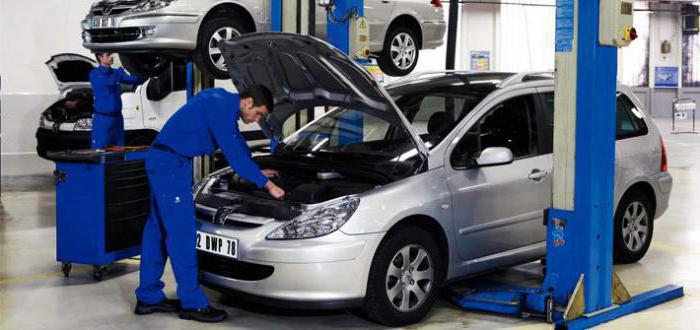
How to extend the life of a car?
Every more or less experienced driver knows perfectly well that a car must be serviced in a timely and efficient manner. If you follow the manufacturer's recommendations, the service life of the car in years or kilometers can be significantly increased.
Here is a list of recommendations that must be followed:
- Strictly undergo technical inspections on time and carry out repairs in accordance with the rules.
- Buy only original spare parts. Non-original analogues, which are cheaper in price, can ultimately lead to more serious damage.
- Do not carry loads whose weight exceeds the maximum load capacity of the vehicle.
- Adhere to speed limits and recommendations regarding gear shifting.
- Do not increase the load on the motor unless absolutely necessary. That is, there is no need to suddenly start or accelerate to high speed and then suddenly brake at traffic lights. It is important to slow down when driving on bad roads. This way you can significantly reduce the load on your car’s suspension and extend its life.
These are all simple, familiar actions that few people follow. However, if you follow the manufacturer’s recommendations, take care of the car and do not overload it, then after decades the iron horse will look like new. Even after sale, such a vehicle will be successfully used for years and will not cause any problems to the new owner. Therefore, you should not skimp on technical inspection and original spare parts, because all this will help you get rid of problems in the future.
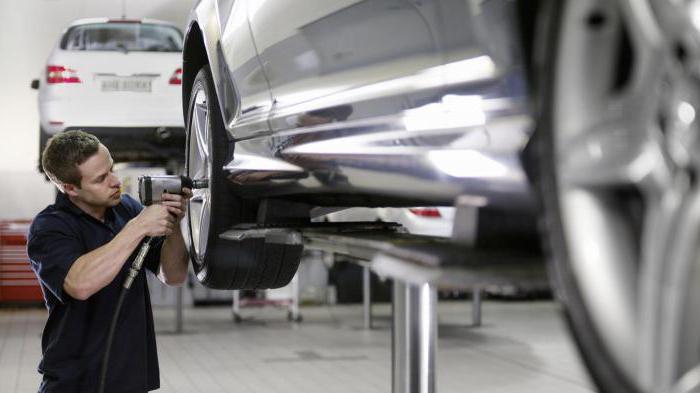
Oil
There is a separate issue with oil. The fact is that lubrication plays one of the most important roles in engine operation. Once you fill in the wrong lubricant, the engine can be seriously damaged.
It is not enough to follow the manufacturer's recommendations regarding the use of oil. It is also necessary to ensure that this product is original. The market is full of fakes, which are strictly not recommended. It is also worth monitoring the viscosity of the oil. If the machine is operated somewhere in the North, where the air temperature is low, then the viscosity of the fluid must be appropriate.
As for older engines, their service life can be extended by changing synthetic-based oil to semi-synthetic. It has been confirmed that on older engines, which almost always have microcracks, a semi-synthetic product works better. So in this case, the manufacturer’s recommendations to use only “synthetics” may be inappropriate.











